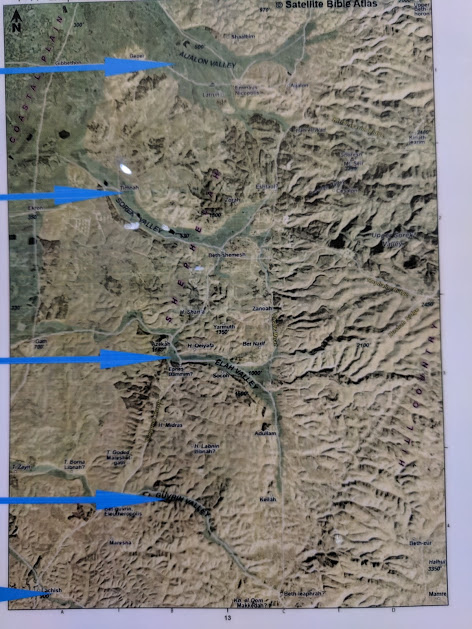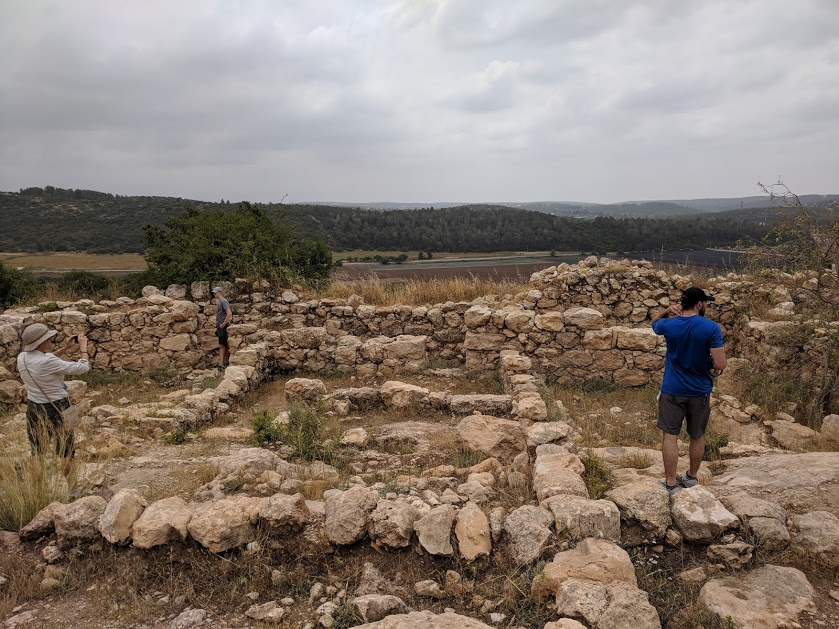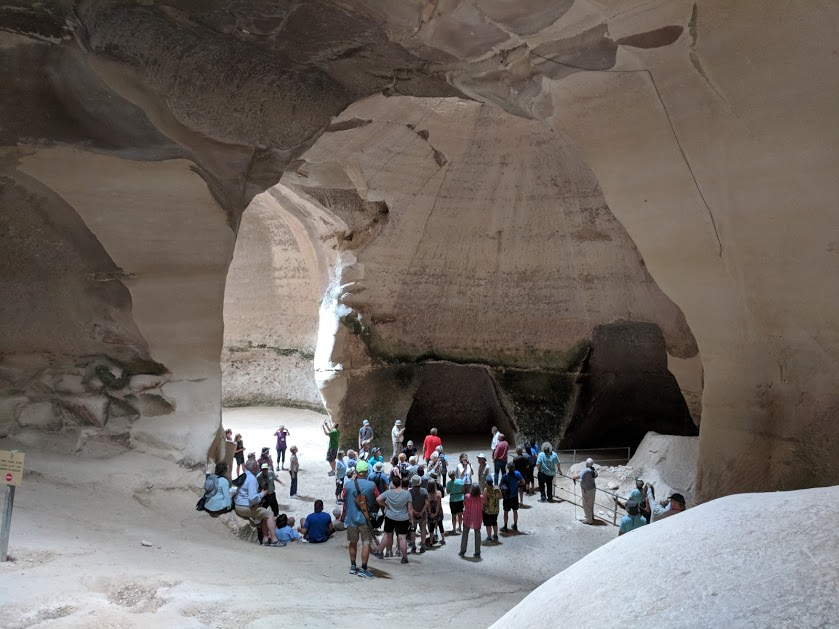Today’s journey took us through the Shfela, or the low foothills between the Via Maris (way of the sea) and the Judean highlands. This would be similar to the foothills leading up to the mountains in North Carolina. All roads leading up to the interior highlands follow streams and valleys. Strong walled cities guard the entrance to each valley in order to control the travel corridor.
 |
| Five Valleys in Israel |
The five valleys from north to south are the Ayalon, Sorek, Elah, Guvrin and Lachish valleys. The map above will show these clearly.
 |
| The Canaanite section of Tel Gezer |
Our first stop of the day was at Tel Gezer, a site we are familiar with because Sarah participated in the dig for two years. (Video). Tel Gezer has a long history, with more than twenty levels within the tel. Gezer controls the Ayalon Valley. Excavations include a Middle Bronze period gate and water tunnel, and also a portion of the city from Solomonic times, when Pharaoh of Egypt gave the city to his daughter and his new son-in-law Solomon.
 |
| The Solomonic Gate at Gezer |
From Gezer we traveled to Beit Shemesh in the Sorek Valley. This was the area where Samson lived. It is also the place where God returned the Ark of the Covenant to Israel after its capture by the Philistines. There is a new archeological dig at this site.
 |
| New Digs at Beit Shemesh |
We then visited the Elah Valley, where a boy named David fought the giant Goliath. We were able to get a good view of the valley from Shaaraim or Shaaraim, a city with two gates which dates to the time period of King David. Our guide laid out the entire battle plan so we could see exactly where events took place.
 |
| Shaaraim, a village of Two Gates |
We visited Gath, the city protecting the Elah Valley. This city is also the hometown of Goliath. It is a massive tel with a long history.
 |
| The Philistine Village of Gath |
Our journey continued with a stop at Beit Guvrin, this is were King Herod grew up. There are multiple columbarium (caves for doves) that are carved out of the chalk to produce underground caves.
 |
| Dove Housing at Beit Guvrin |
There are also massive caves left behind from the mining of chalk. These bell shaped caves are very beautiful and have great acoustics.
 |
| The Bell Caves at Maresha |
We finished the day at the motel in Beer-Sheva.


